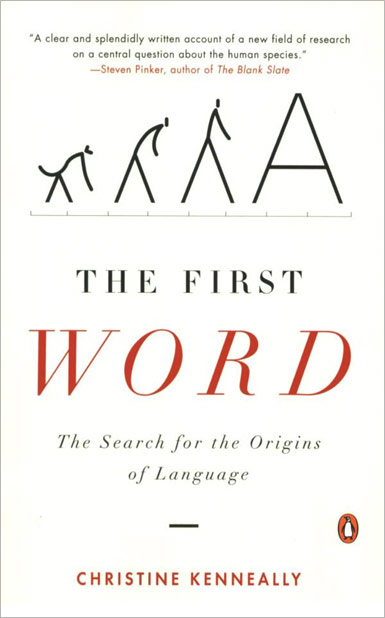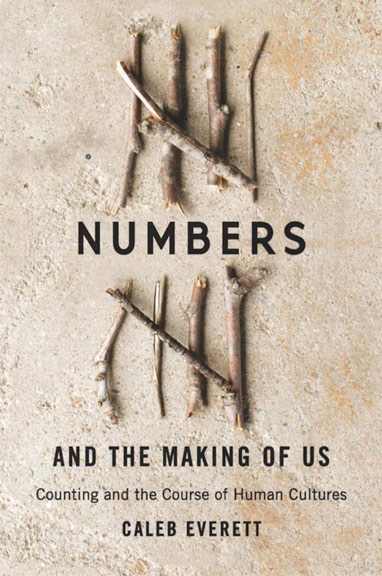
Book Review
The Secret Life of Pronouns
What Our Words Say About Us
By James W. Pennebaker
Review by Hannah Mulcahy
“Words can be both mirrors and tools.”
The most inconspicuous words can hide an enormous amount of information. As social psychologist James W. Pennebaker explores in his book The Secret Life of Pronouns: What Our Words Say About Us, by closely observing the ways that people use language to express their thoughts, “we can begin to get a sense of their personalities, emotions and connections with others.” We might assume that the best way to unlock these insights would be to focus on a person’s content words—such as nouns, action verbs and adjectives—as it would be impossible to communicate an idea or thought without them. However, Pennebaker’s work proves that assumption wrong. With the help of numerous compelling academic studies and real-life examples, Pennebaker demonstrates that the most accurate way to analyze someone’s personality and their social connections is by paying attention to a very specific subset of words they use—the “function words.”
Function words, or stealth words, are the small, “in-between” words that organize language. They include pronouns (e.g. I, they, we, it), negations (no, never, not), prepositions (in, with, at, on) articles (the, an, a), conjunctions (but, if, and), auxiliary verbs (have, be, do), quantifiers (most, least, some) and common adverbs (very, really). Since these words appear so frequently in language, they are often overlooked and, therefore, not thoroughly examined. Pennebaker argues that innovative approaches to studying these function words can be key to understanding more about the human mind and can even reveal subtle markers of our personality, social status and emotional states that most of us would never even notice. These can include our social dynamics, relationship compatibility, identity expression and whether we are narrative, formal or analytical thinkers.
Computational Linguistics—Decoding Our Words
“Life imitates art and science is here to record it.”
The book takes an interesting lens to computational linguistics. Throughout, Pennebaker discusses his innovative research into computerized language analysis to learn more about the ways humans communicate. This includes how we process our emotions, the role of language in various domains like the workplace, in relationships and in positions of power, and how our language is perceived by those around us. What, at first, comes across as a daunting technical innovation—the Linguistic Inquiry and Word Count program, or LIWC (pronounced “Luke”)—quickly becomes fascinating when explained in the context of Pennebaker’s academic research. The LIWC program was initially designed to investigate whether it was possible to predict improvements in people’s health by the way they wrote about traumatic events. Using data from multiple expressive writing studies, LIWC was tasked with finding word categories that were linked with healthy writing. The results showed that, unsurprisingly, people who wrote using more positive emotions than negative emotions saw a greater improvement in their physical and mental health in the months that followed the experiment. One compelling finding outlined that repeating the same story word for word often reflected symptoms of depression, such as ruminative thinking. These results make clear that LIWC isn’t just a research tool—it could play a vital role in creating better treatments for those who have endured trauma.
Language Style Matching (LSM)
“Couples who naturally synchronized their function words with each other were more likely to maintain their relationship over time.”
Another computer program developed and discussed by Pennebaker is the Language Style Matching (LSM) detector. LSM refers to the matching of function words in conversations between people, which is closely connected to “mimicking nonverbal behaviors and, according to recent findings, voice intonation and inflection,” almost like a synchronized linguistic dance between people—a sort of verbal counterpart to the body-movement mirroring known as “kinesics” which the late anthropologist Edward T. Hall wrote about in Beyond Culture. This style matching is responsible for supporting the natural “rhythm” of a conversation by maintaining “emotional tone, formality, and openness.” The LSM detector is, therefore, used to understand relationships between people. Pennebaker describes using this system in a study of eighty-six young couples who communicated daily using instant messaging. In their analysis of these couples’ messages, Pennebaker and his colleague Richard Slatcher found that “of the forty-three couples with the highest LSM scores, 77% percent were still dating three months later, compared with only fifty-two percent of the couples with low scores.”
The LSM detector was able to predict the success of a couple relatively accurately just by tracking their conversations over a few days, shining a light on the predictable nature of human communication and the significance of style matching in our personal relationships. It also raises an interesting idea: could technology like LIWC be used in dating apps or relationship therapy one day, helping people recognize patterns and build stronger connections?
In addition to LIWC, Pennebaker discusses other computerized language analysis programs which have been used to examine a variety of linguistic patterns in different social contexts. From a study of cohesive language use between communities in Craigslist advertisements to an analysis of college admission essays and the language of lying, the world of computational linguistics is shown to be much more than just numbers and statistics; it is all around us, all of the time, and can shape our understanding of who we are.
The Role of Pronouns
“Pronouns and other stealth function words serve as subtle emotion detectors that most of us never consciously appreciate.”
Pronouns have been studied and scrutinized long before they became a fundamental polarizing feature of Western politics. The significance of pronouns and other function words is consistently emphasized by Pennebaker and is the focal point of every study. He explains that looking closer into an individual’s use of pronouns can tell us a whole lot more than we might think, signaling a person’s sense of “status, power, self-confidence, arrogance, and leadership.” The importance of first-person pronouns or I-words (I, me, mine) versus first-person plural pronouns or we-words (we, us, ours) is reiterated across many chapters.
We assume, sometimes correctly, that people who use “I” a lot are egoists or full of themselves. But Pennebaker explains that I-words are, in fact, more often associated with opposite attributes, because we pay more attention to ourselves when we are self-conscious, anxious, self-aware or in pain; while “we-words are used frequently when people are arrogant, emotionally distant and high in status.”
“There is a misconception that people who are confident, have power, have high-status tend to use ‘I’ more than people who are low status,” says Pennebaker. “That is completely wrong. The high-status person is looking out at the world and the low-status person is looking at himself.”
Pennebaker demonstrates this in every chapter, each containing multiple studies with intriguing insights into the human psyche. Pennebaker’s research into the language of US presidents reveals how people are much more receptive to a high use of I-words from presidents and presidential candidates, as a greater quantity of we-words is subconsciously interpreted as arrogant and “too presidential.” An absorbing comparative study of Shakespeare’s King Lear and former mayor of New York City Rudolph Giuliani indicates a parallel between “emotional states and function words, particularly pronouns.” Before experiencing traumatic events, both men use high rates of we-words and are described as arrogant and cold. However, Pennebaker then reveals that the way the two men express themselves after a significant life upheaval is in complete contrast: high rates of I-words and pronouns switch public perceptions of them into warm and honest men. These studies reveal the relationship between the language of power as well as the effects of trauma on language, with function words being inextricably tied to both.
Pennebaker also discusses gender differences between the use of pronouns. An in-depth study of male and female dialogue in popular plays and films reveals that many male scriptwriters tend to mischaracterize feminine speech patterns by creating both male and female characters who speak like stereotypical men, using I-words and other personal pronouns at below-average levels. The same can be said for several female scriptwriters whose work was analyzed: they wrote male characters that speak more like women. These tiny distinctions are not consciously noticeable to the human ear, but can influence the way characters are subconsciously perceived, showing that a better understanding of how function words are used can not only challenge gender stereotypes, but can also be used to shape modern media.
Function Words and Mental Health
“Emotions make us think about the world differently and function words reflect this change in thinking.”
Another study that has real-life implications is Pennebaker’s research into the language of depression, alongside clinical psychologist Shannon Stirman. In a computerized analysis of work published by eighteen poets, of which nine committed suicide, Pennebaker and Stirman learned that the poets who committed suicide used I-words at a much higher rate than those who did not. A rather surprising discovery was that there was not a significant difference in the use of negative emotion words between the two groups of poets. On top of that, Pennebaker adds that a high rate of I-words in the written work of college students was a higher indicator of depression than negative emotion words, further highlighting just how much our use of pronouns can reflect our inner emotional states. While Pennebaker acknowledges the small sample size of his poetry analysis, the findings of the study suggest that deeper research into pronoun usage could help improve mental health services and even make it easier to spot the early signs of depression.
The analysis of function words, and pronouns specifically, by Pennebaker and his colleagues can reveal our linguistic fingerprints and lead to new insights into the way humans process language, as well as the unconscious language patterns that reveal our emotional states.
An Immersive Experience
“Most promising, however, is that by looking at our own function words, we can begin to understand ourselves better.”
The Secret Life of Pronouns engages readers with small, accessible online tasks woven into the book. Pennebaker invites us to visit the book’s website, providing links to several informative videos about psychology and language, and a small number of short exercises. The exercises are designed as an opportunity to apply a study’s findings to our own language patterns and social connections. These include an LSM calculator, a survey about daily behaviors which analyzes different behavioral types, a writing task to analyze perception style, and a quiz to test our understanding of how I-words are used in day-to-day language. Not only does Pennebaker explain how computational linguistics can be used to support emotionally aware education and transform how a society functions, but also how it can guide our own personal development and improve our relationships with others. He exhibits its far-reaching effects, reflecting how our minds adapt to a world that is constantly evolving and modernizing. What emerges is a remarkable truth: it’s not the big words we use, but the words we barely register, that have the most profound influence on not only our perception of the world, but of who we are.

The First Word
The Search for the Origins of Language
Christine Kenneally
Human communication depends on the same genetic foundations as other animals. Some were born with a greater inclination to collaborate, forming the symbolic communication of language.

Numbers and the Making of Us
Counting and the Course of Human Cultures
Caleb Everett
Numbers, says Everett, are a key linguistic innovation that has distinguished our species and reshaped human experience.

